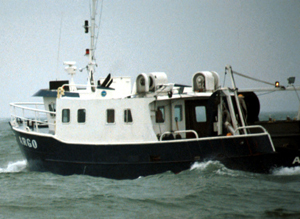DEC’s Lake Erie Fisheries Unit completed its annual report describing the status of Lake Erie fish populations and fisheries in 2015. Some of the notable highlights from this year’s report include:
-
Boat anglers fished an estimated 369,000 hours in the New York portion of Lake Erie during the 2015 open-water season. This was nearly identical to the 2014 estimate which was the highest since 2001.
-
Walleye fishing quality was above average in 2015 and catch rates have been above average during 10 of the past 11 years. Smallmouth bass fishing quality was exceptional in 2015. Yellow perch fishing quality in 2015 declined from the time series high in 2014, but was still the 5th highest in the last 28 years.
-
Netting surveys measuring juvenile walleye abundance suggest that moderate spawning success occurred during 2014. Very strong walleye hatches produced in 2003, 2010 and 2012 should contribute significantly to the walleye sport harvest during 2016.
-
Overall smallmouth bass abundance in survey nets has gradually declined in recent years. Abundance of young bass (age-2) was well below average in 2015.
-
Overall yellow perch abundance in survey nets has been declining since the 28 year high in 2011. This decline is largely due to due to poor production of juvenile yellow perch since 2011.
-
Lake trout abundance in survey nets remained very high in 2015 with the majority of the catch comprised of young adults ages 5-7. Abundance of spawning age lake trout (age 5 and older) was the highest in the series, but much older fish (age 10 and older) remain scarce.
-

A variety of measures to assess sea lamprey indicate that this invasive species remains at unacceptably high abundance and crucial sea lamprey control efforts will remain underway to protect important fish populations.
-
Monitoring of prey fish species found average abundance in 2015, and measures of sport fish growth rates have been stable. Rainbow smelt are the dominant prey species.


 A variety of measures to assess sea lamprey indicate that this invasive species remains at unacceptably high abundance and crucial sea lamprey control efforts will remain underway to protect important fish populations.
A variety of measures to assess sea lamprey indicate that this invasive species remains at unacceptably high abundance and crucial sea lamprey control efforts will remain underway to protect important fish populations.